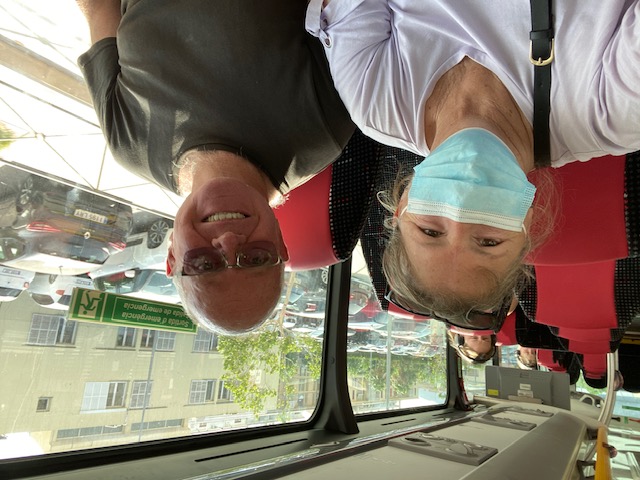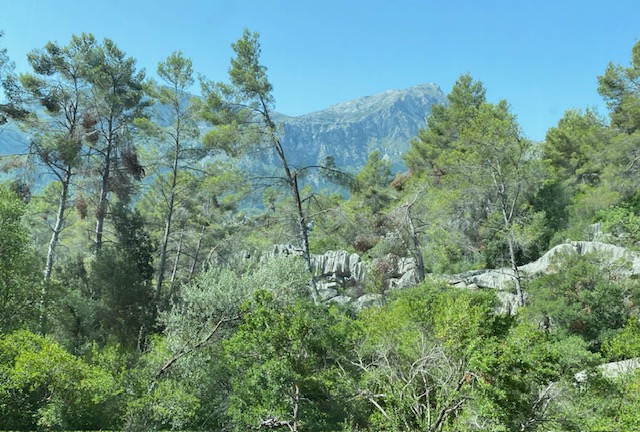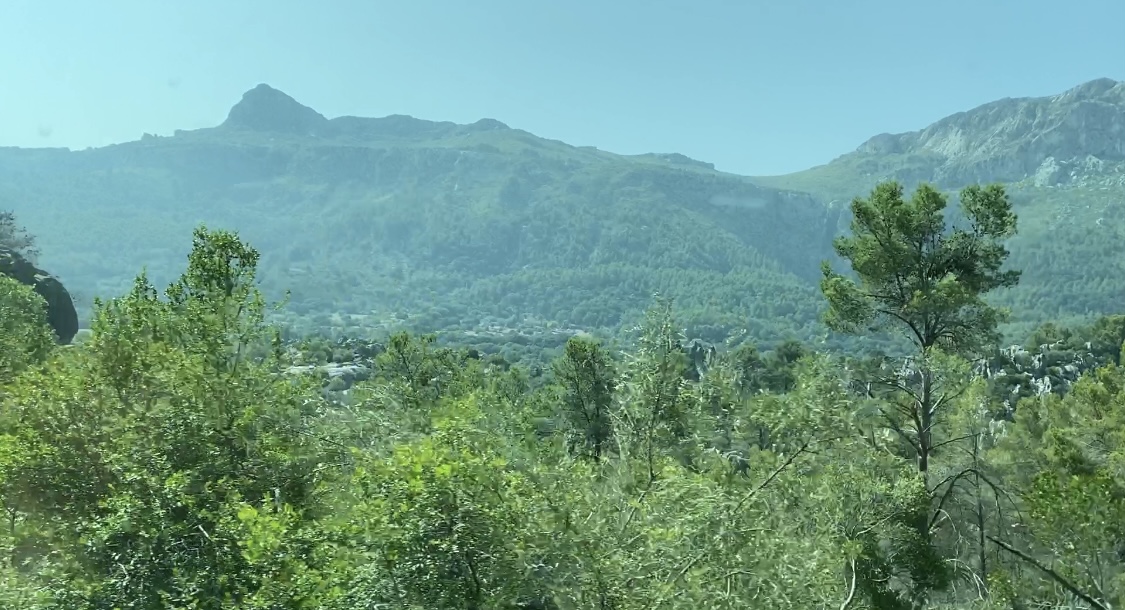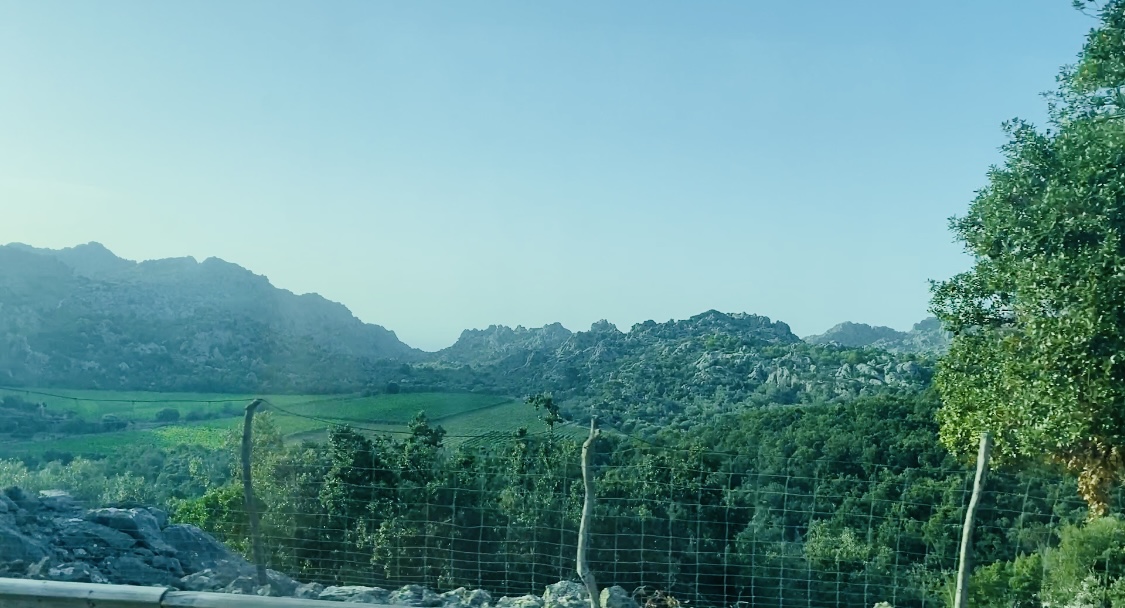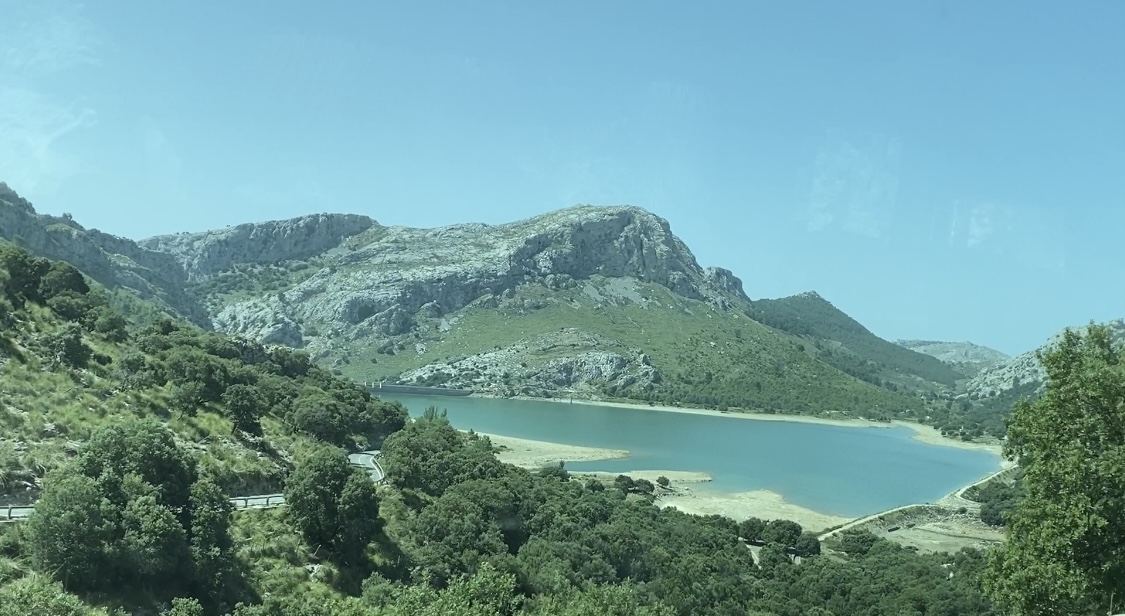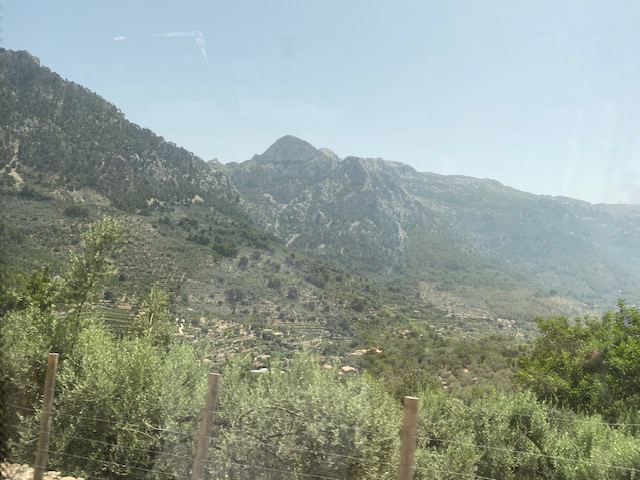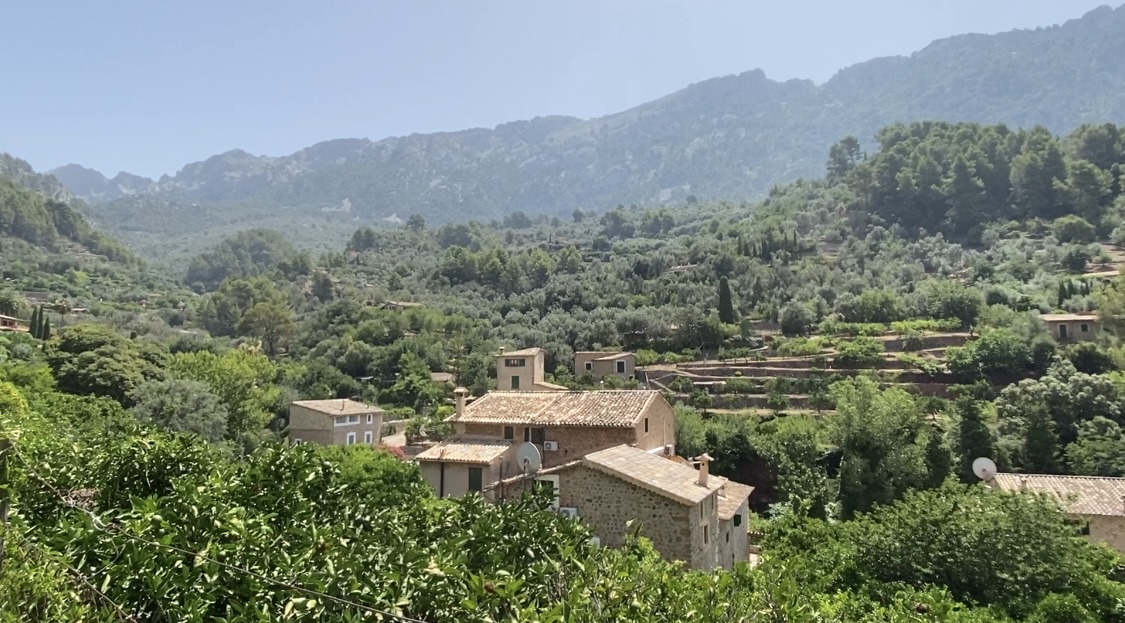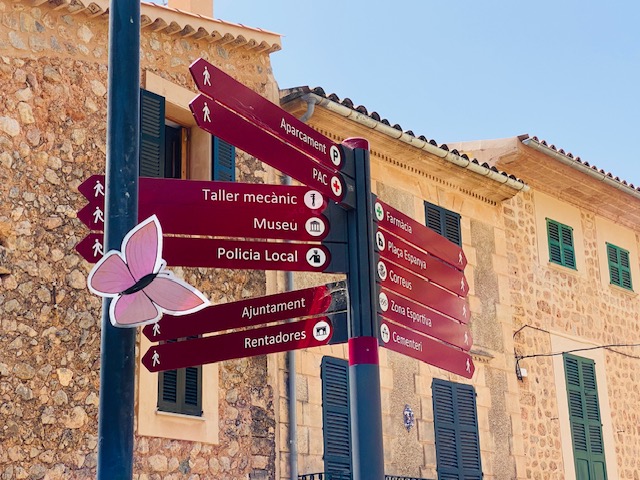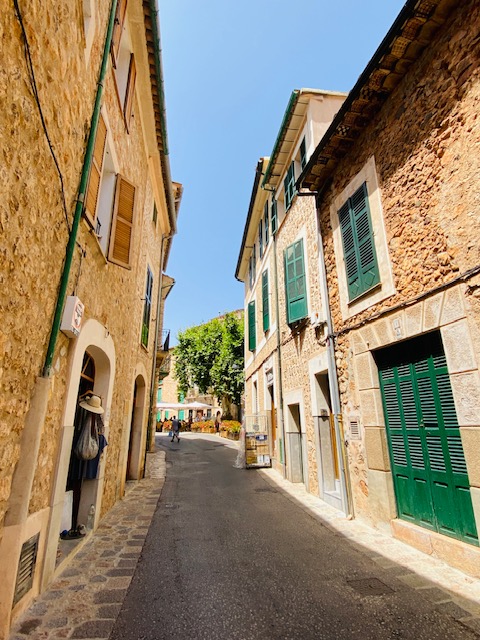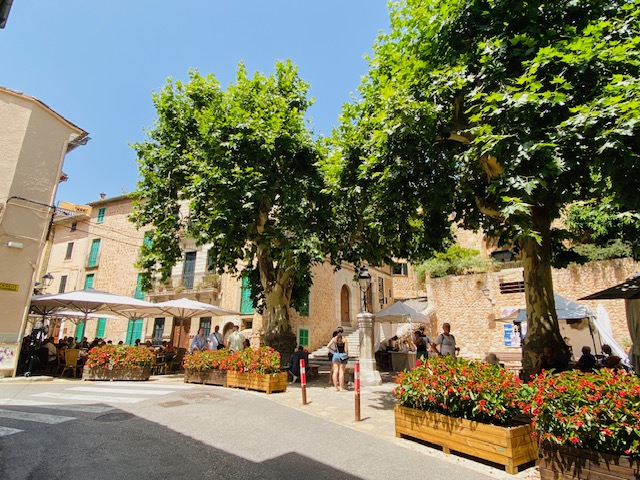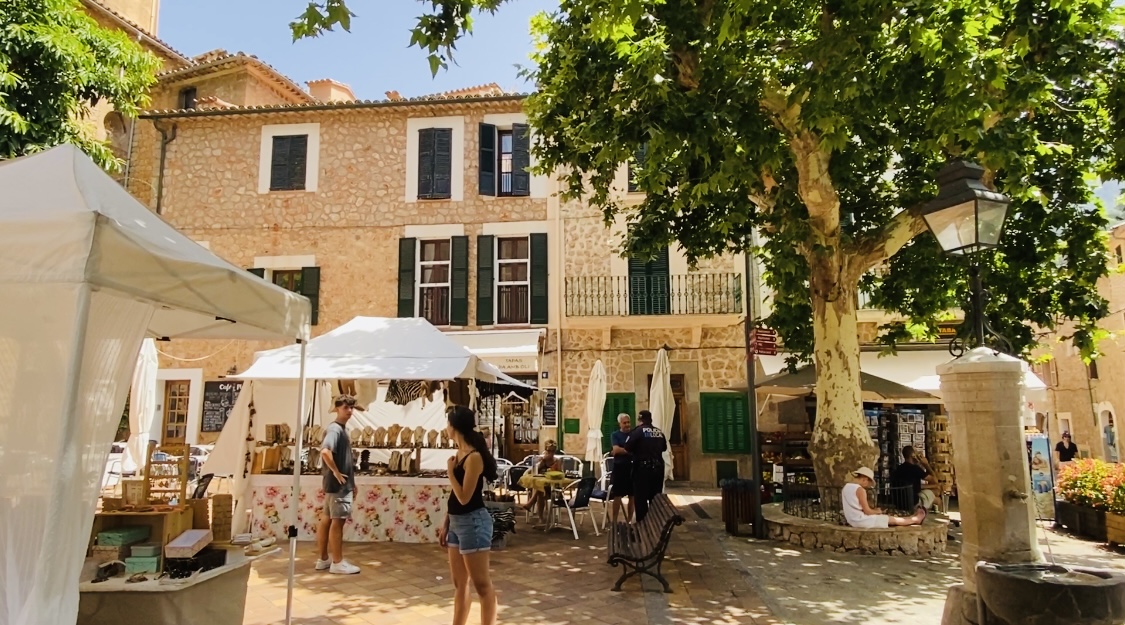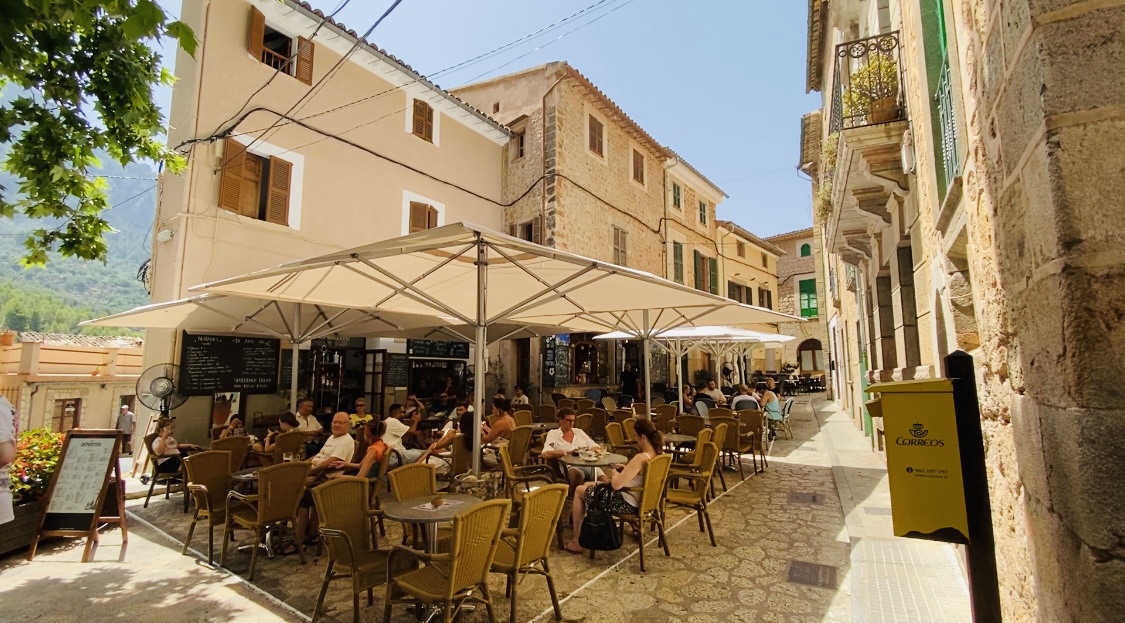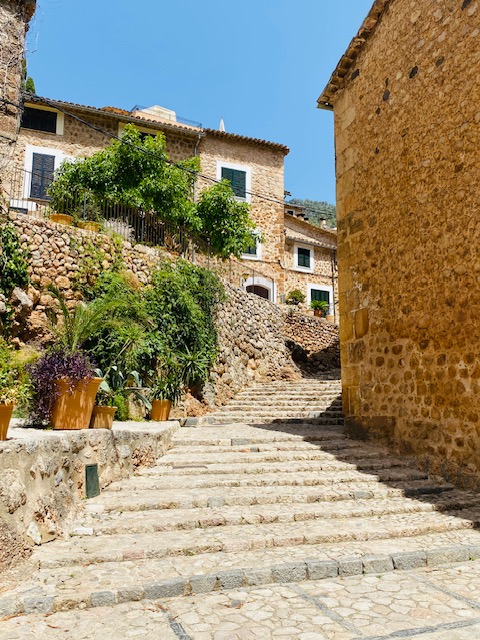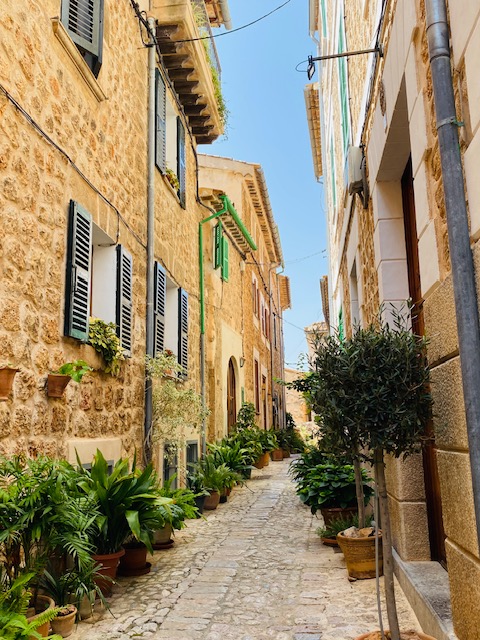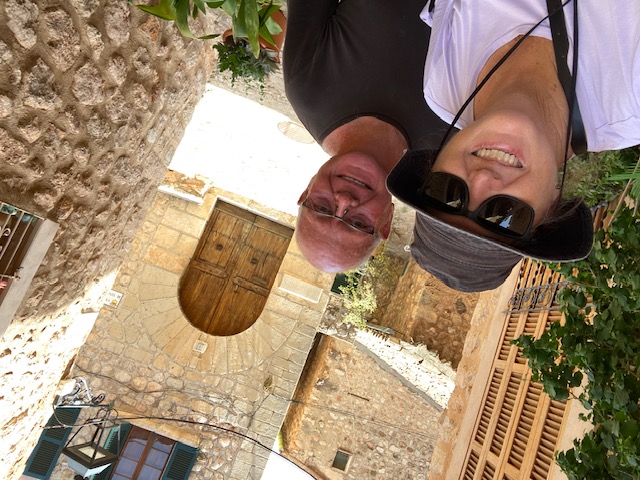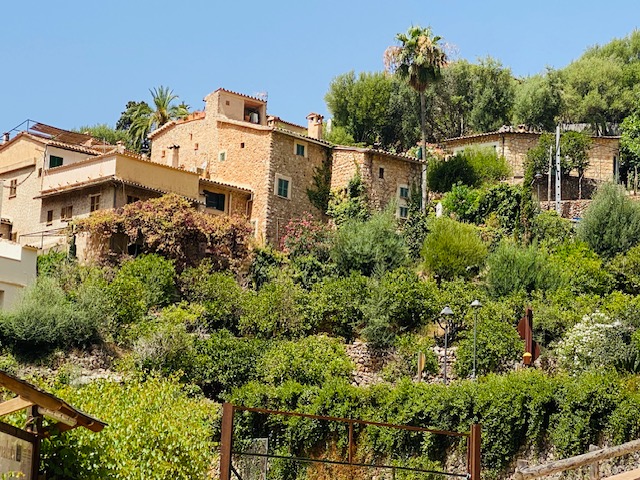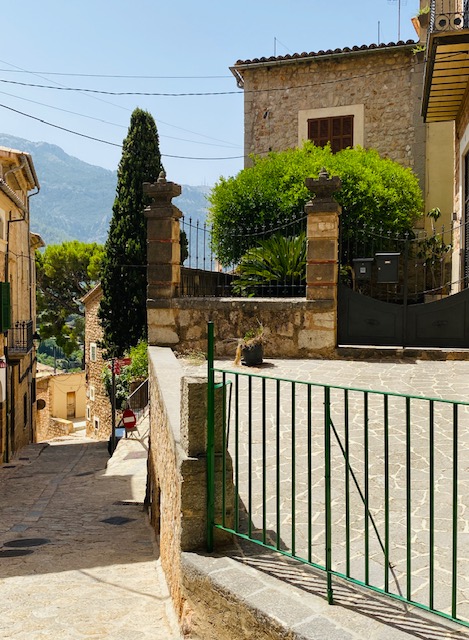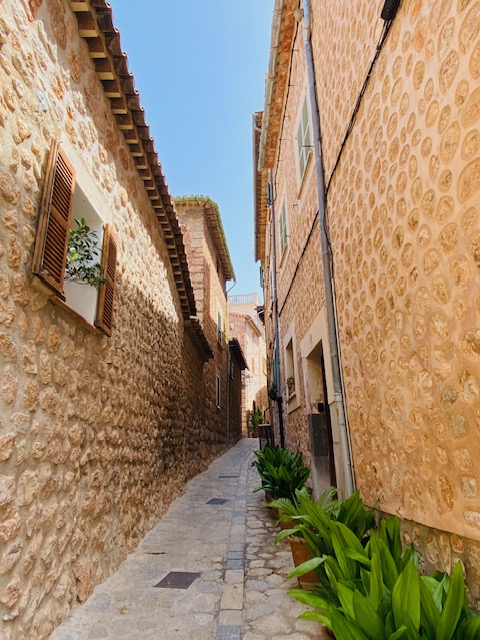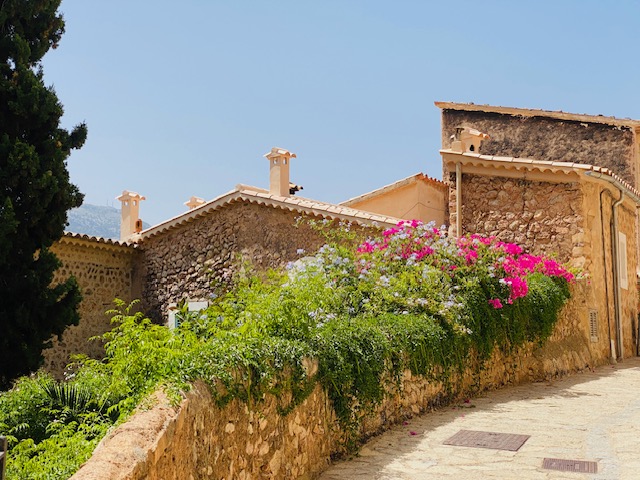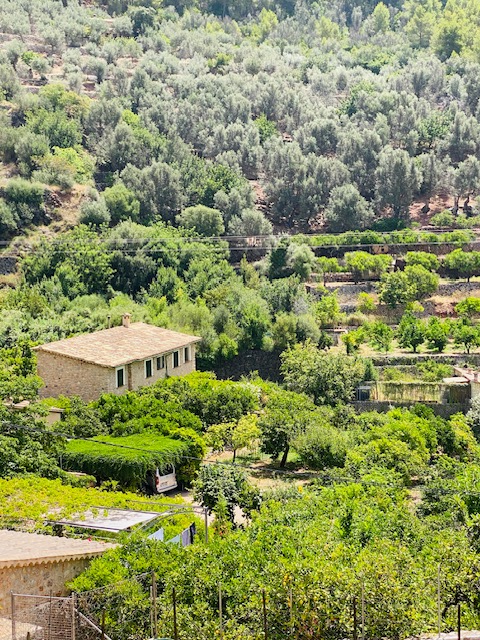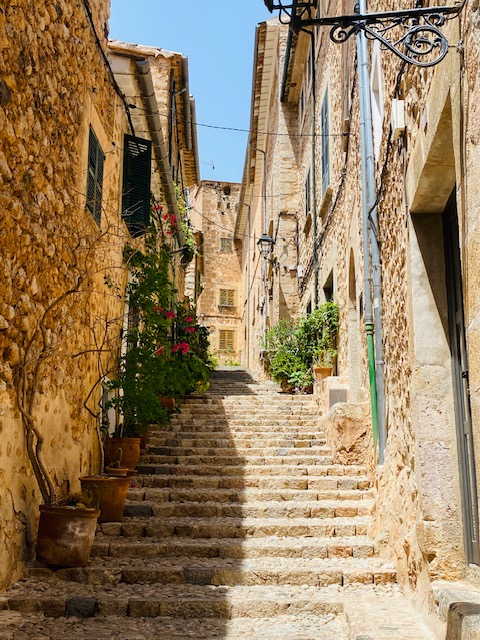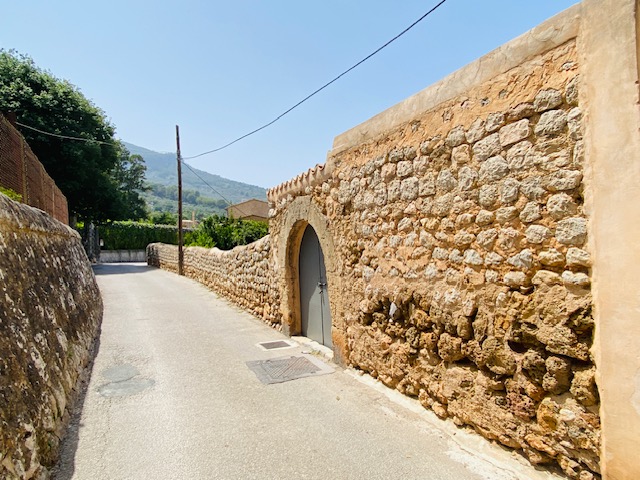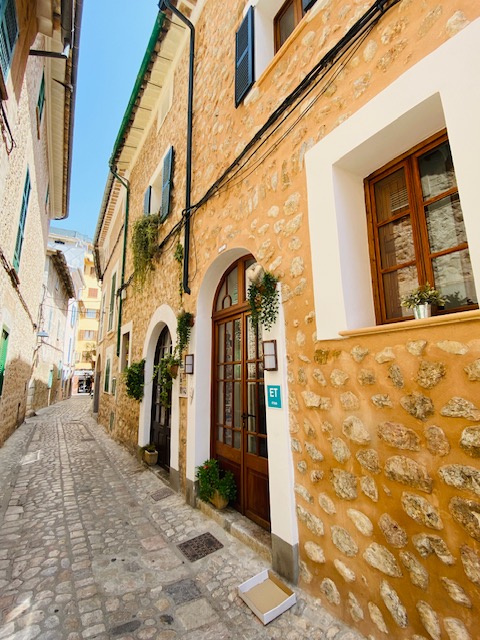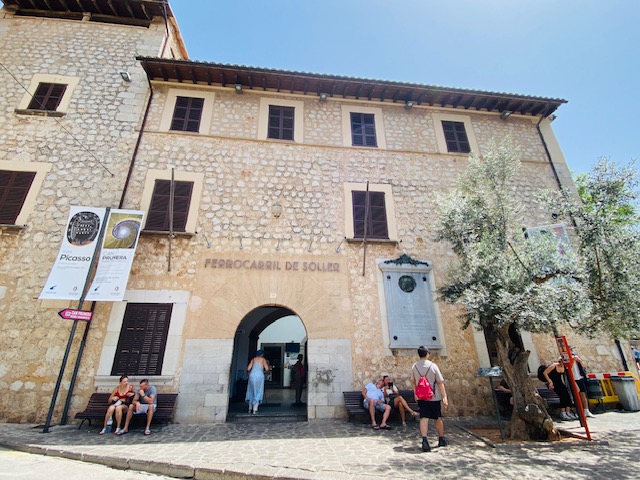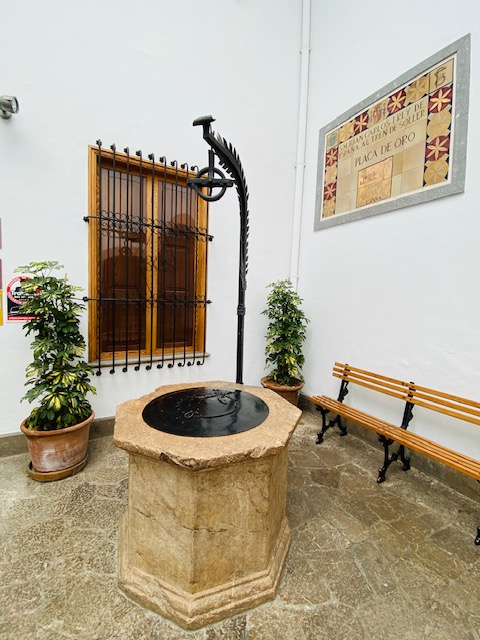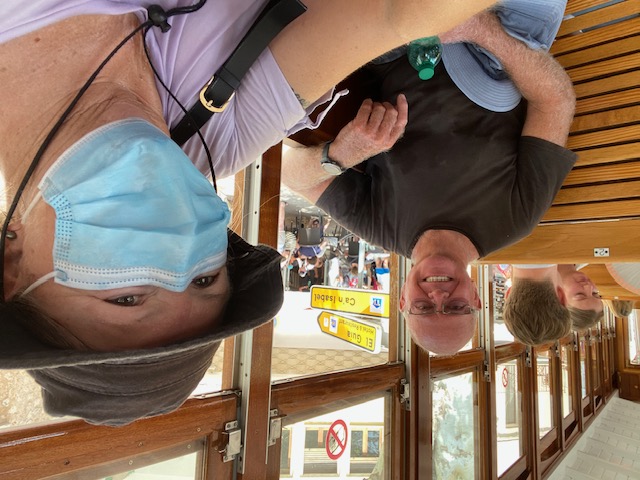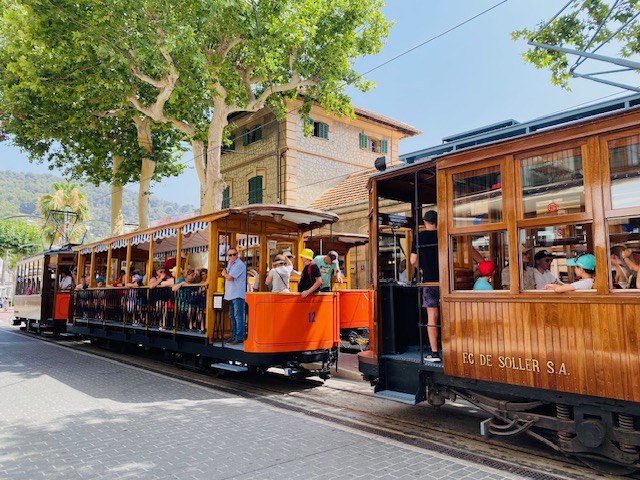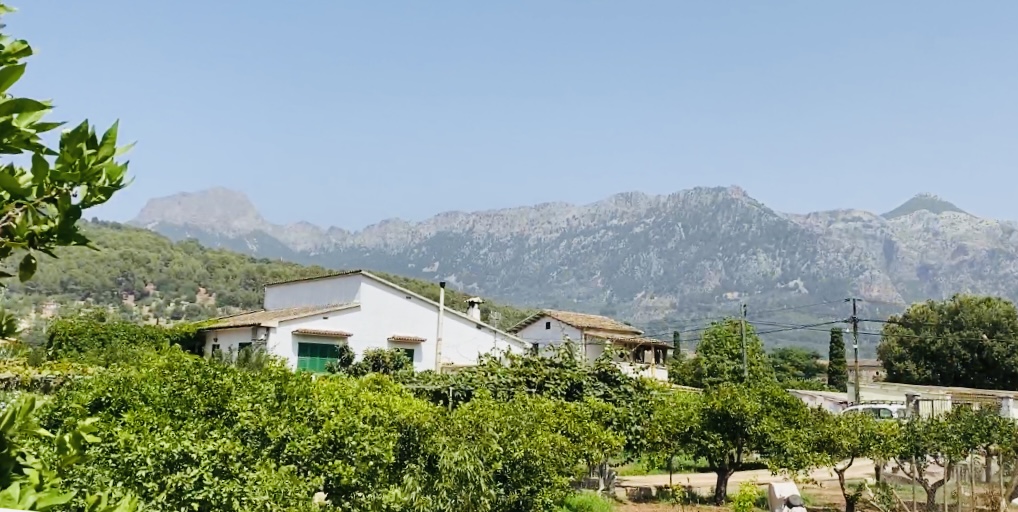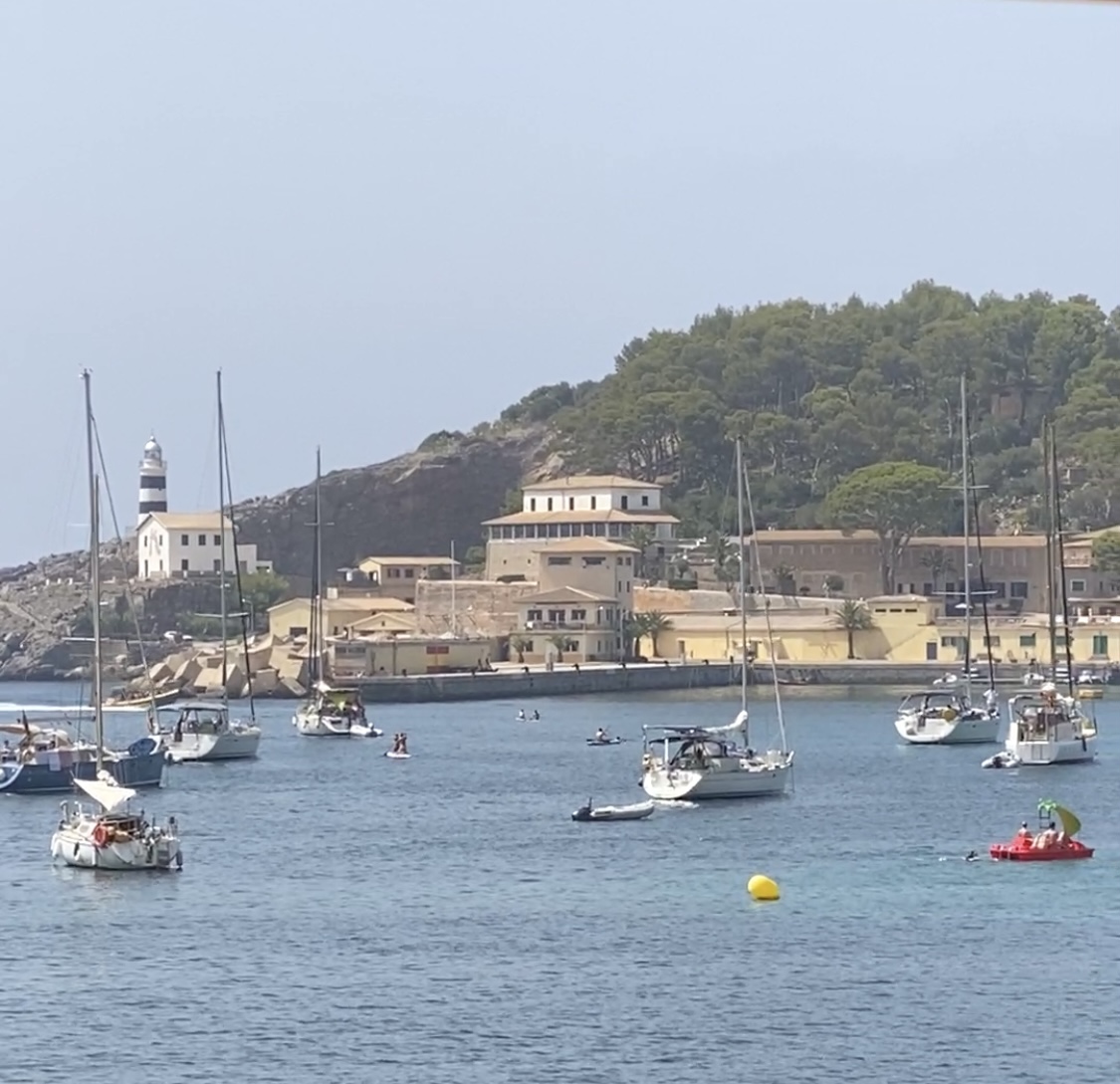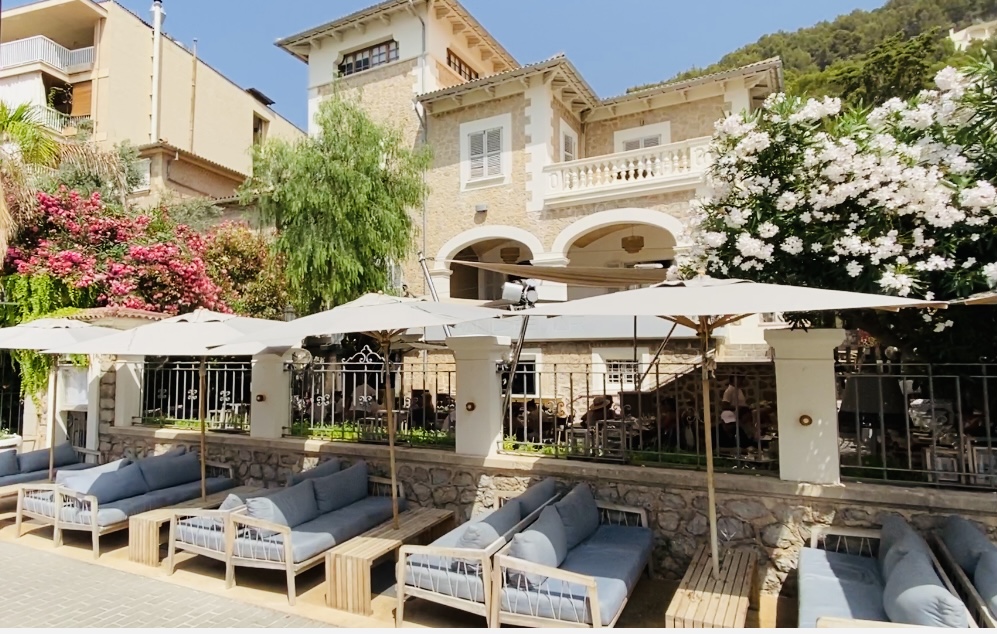Since we were heading into and over the “Serra de Tramuntara” (Tramuntara mountains), we were escaping the heat and enjoyed stunning scenery along the way, including lush woodlands, a beautiful lake and Puig de Massanella, the second highest peak on the island, all in the comfort of a rather luxurious air-conditioned coach; much nicer than we expected for local transportation.
We also had the opportunity to see the vineyards of Mortitx from a distance and have a brief stop in “Santuari de Lluc”, a monastery and the most important pilgrimage site on Mallorca, founded in the 13th Century after a Moorish shepherd found a statue of the Virgin Mary on the site where the monastery was then erected. It is also known for its boys’ choir, “Els Blauets”, founded in 1531.
Today, besides a botanical garden trail, containing a small exposition on preserving the environment of the mountain region, a boarding school and a number of tourist-orientated facilities, a night walk from Palma to the sanctuary takes place every year during the first weekend in August, leaving from “Plaça Güell” in the capital. The cells of the former monks can also be rented by visitors.
It was close to lunchtime by the time we arrived in the mountainous village of Fornalutx, but it was well worth the wait. The entire village is built from the surrounding stone with red roof tiles and most windows of the buildings having green painted wooden shutters; not surprising that it is considered the prettiest village on the island. It was really beautiful.
Built on different levels, many of the higher streets are pedestrianised and cobbled, with grassy paths leading off into the orchards and farms to the north. From our vantage point we could see the orange and lemon orchards as well as the olive groves higher up the mountain side, with some of the latter trees more than a thousand years old.
This village, set in the mountainous terrain, is considered one of the best examples of how to make optimum use of the natural landscape by building hillside terraces from the available stone and taking advantage of the woodland areas and available water supplies, coupled with the use of ancient growing techniques to harvest the olive trees and fruit orchards, all of which lead to the area being declared a UNESCO World Heritage Site in 2011.
At the centre of Fornalutx is the “Plaça d'Espanya”, surrounded by cafés and a general store and where we had a very tasty lunch at a little restaurant called Can Benet, after wandering the narrow streets of the village.
Afterwards we made our way back to the bus stop for our return trip to Sóller and to enjoy our next adventure; Mallorca’s first, and only, electrical tram, to enjoy the sights of the Sóller Valley, with its orange orchards, on the way to Port de Sóller. Getting to the tram station, though, was a rather interesting trek through the deserted backstreets of Sóller, passing “Jardi Botànic de Sóller” and eventually stumbling into the town centre.
After arriving in Port de Sóller, unfortunately, our timing was a little off and we missed our return bus ride back to Port de Pollença by a few seconds; the bus was literally pulling away as we approached the bus stop, making for a rather hot, long wait for the next one, which got us back to Paw Paw well after 2100, but not before whiling away a few hours on the waterfront of Port de Sóller and enjoying a cold beverage or two.
Although we were both tired and hot by the time we got back to Paw Paw, it had been a wonderful day of exploring Mallorca Island. Switching on the air-conditioners onboard to cool ourselves down, as well as Paw Paw, though, was a necessity before enjoying a cold shower and crawling into our beds.
Today, after breakfast, we dinghied ashore and hopped on the bus to Sóller, situated in the northwest region of Mallorca Island. Our specific destination, however, was the picturesque village of Fornalutx, which required a connecting local bus service.
Since we were heading into and over the “Serra de Tramuntara” (Tramuntara mountains), we were escaping the heat and enjoyed stunning scenery along the way, including lush woodlands, a beautiful lake and Puig de Massanella, the second highest peak on the island, all in the comfort of a rather luxurious air-conditioned coach; much nicer than we expected for local transportation.
We also had the opportunity to see the vineyards of Mortitx from a distance and have a brief stop in “Santuari de Lluc”, a monastery and the most important pilgrimage site on Mallorca, founded in the 13th Century after a Moorish shepherd found a statue of the Virgin Mary on the site where the monastery was then erected. It is also known for its boys’ choir, “Els Blauets”, founded in 1531.
Today, besides a botanical garden trail, containing a small exposition on preserving the environment of the mountain region, a boarding school and a number of tourist-orientated facilities, a night walk from Palma to the sanctuary takes place every year during the first weekend in August, leaving from “Plaça Güell” in the capital. The cells of the former monks can also be rented by visitors.
It was close to lunchtime by the time we arrived in the mountainous village of Fornalutx, but it was well worth the wait. The entire village is built from the surrounding stone with red roof tiles and most windows of the buildings having green painted wooden shutters; not surprising that it is considered the prettiest village on the island. It was really beautiful.
Built on different levels, many of the higher streets are pedestrianised and cobbled, with grassy paths leading off into the orchards and farms to the north. From our vantage point we could see the orange and lemon orchards as well as the olive groves higher up the mountain side, with some of the latter trees more than a thousand years old.
This village, set in the mountainous terrain, is considered one of the best examples of how to make optimum use of the natural landscape by building hillside terraces from the available stone and taking advantage of the woodland areas and available water supplies, coupled with the use of ancient growing techniques to harvest the olive trees and fruit orchards, all of which lead to the area being declared a UNESCO World Heritage Site in 2011.
At the centre of Fornalutx is the “Plaça d'Espanya”, surrounded by cafés and a general store and where we had a very tasty lunch at a little restaurant called Can Benet, after wandering the narrow streets of the village.
Afterwards we made our way back to the bus stop for our return trip to Sóller and to enjoy our next adventure; Mallorca’s first, and only, electrical tram, to enjoy the sights of the Sóller Valley, with its orange orchards, on the way to Port de Sóller. Getting to the tram station, though, was a rather interesting trek through the deserted backstreets of Sóller, passing “Jardi Botànic de Sóller” and eventually stumbling into the town centre.
After arriving in Port de Sóller, unfortunately, our timing was a little off and we missed our return bus ride back to Port de Pollença by a few seconds; the bus was literally pulling away as we approached the bus stop, making for a rather hot, long wait for the next one, which got us back to Paw Paw well after 2100, but not before whiling away a few hours on the waterfront of Port de Sóller and enjoying a cold beverage or two.
Although we were both tired and hot by the time we got back to Paw Paw, it had been a wonderful day of exploring Mallorca Island. Switching on the air-conditioners onboard to cool ourselves down, as well as Paw Paw, though, was a necessity before enjoying a cold shower and crawling into our beds.
